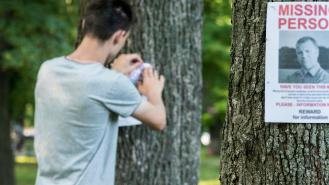
How to find a missing person
Every 90 seconds someone is reported missing in the UK. According to the charityMissing People there are around 340,000 missing incidents reported every year. This means that 1 in every 200 children and 1 in every 500 adults goes missing each year.
A missing person is defined as, ‘Anyone whose whereabouts cannot be established and where the circumstances are out of character or the context suggests the person may be subject of crime or at risk of harm to themselves or another.’
Luckily incidents involving abductions and murders are extremely rare and according to the Missing Persons Unit, the UK national and international point of contact for all missing person and unidentified body cases, most people who go missing return or are found within 48 hours, with only around 1% still remaining missing after a year.
It can be an incredibly traumatic experience when someone goes missing but it’s imperative that immediate action is taken to increase the chances of finding them, since vital clues may be found in the first few hours after someone disappears.
Call the police
There is a common misconception that you have to wait 24 hours before you can report a person missing. This is not the case. If you believe someone has gone missing you can report it to the police at any time and they should be your first point of contact.
You can contact them on 101 or visit your local police station even if the missing person lives in another part of the UK. If you believe the person could be in danger or serious risk of harm don’t hesitate to call 999.
Be prepared to provide the police with as much information about the missing person as possible. According to gov.uk and Missing People, this information may include the following:
1. Personal details such as their full name, date of birth, home address, mobile number and employment details
2. A recent photo and a physical description of the person, including what they were wearing when they disappeared and if they have any identifying features e.g. scars, tattoos etc
3. Details relating to the disappearance; when they were last seen and by whom, your last contact with the individual, any details relating to possible reasons behind their disappearance, details of places they often visit
4. Details of their friends or relatives
5. Any factors that might put the missing person at risk, for example; the missing person is under 18, has physical or mental health issues or has a drug or alcohol dependency
6. Police may ask for personal items belonging to the missing person if they are left behind, for example; mobile phones, diaries, laptops or even a sample of their DNA, e.g. from a toothbrush, so that the DNA details can be put on the UK Missing Persons DNA Database.
If you are unsure of any of the details mentioned above, don’t worry as the information may be found via other family members and somebody’s date of birth can be obtained from the General Register Office. TheMissing People charity can also help you gather the necessary information.
The police will then assess whether the person is a low, medium or high-risk case and will then consider all lines of enquiry that are appropriate and necessary in the circumstances. If the case is deemed high-risk officers will be sent out immediately to begin their checks and searches, which according to the Missing Persons Unit may include the following:
- Searching the home address of the missing person
- Searching the area where the person was last seen (if different to their home)
- Checking with local hospitals
- Checks on mobile phones and computers used by the missing person
- House to house enquiries
- Reviewing CCTV footage
- Co-ordinating media coverage to raise awareness and appeal for sightings
- Specialist searches (for example, using helicopters, divers or dogs)
If the person is still missing after 72 hours the Missing Persons Unit will get involved, although high-risk reports are escalated sooner. The unit is able to advise police forces about the most likely places to find missing people, taking into account their gender and age.
Make sure you take a note of the unique reference number the police will create for the missing person. This will ensure you are always directed to the best person to speak to when calling the police about the case.
Along with the police enquiries you can conduct your own searches, although you shouldn’t feel that you must be part of the ongoing search. You have done the most important job by reporting to the police who are the right people to be searching for the person who has gone missing.
However, if you wish to do more, liaise with the police over how you can help and ensure you agree with them on who’s doing what so that no duplication occurs.
You could then, for example, check the last place the missing person was seen. If you have permission search their home and look for any notes or clues that may suggest where they may be. Check your voicemail and email just in case they’ve left you a message. If the missing person has ‘family sharing’ enabled on an iPhone or the Family Link app on Android devices or any other tracking based app that you share access to, you could log on and see the location of their phone which might lead you straight to them.
Contact places the missing person might be or often frequents. Call your local hospital and ask whether anyone by the missing person’s name has been admitted. If no one has then make sure to ask whether the hospital has any unidentified people in their care and if so provide them with a detailed description of the missing person.
Contact everyone in the missing person’s life that you can, including family, friends, co-workers or classmates, neighbours and anyone else who had regular contact with them. Determine when these people last saw the missing person and if they have any idea as to where he or she might be. Give them the police contact details as they might have information they’d be willing to share with them but not with you.
The way of the modern world means that social media is a vital tool in gaining information about the potential whereabouts of the missing person. If they have any social media accounts like Facebook, Twitter or Instagram, make sure to check them as well as any relevant friends’ accounts as well to determine whether there has been any recent activity on them. Message anyone they may have corresponded with before their disappearance.
Write everything down and keep a detailed log of the information you have gathered and anything that seems out of the ordinary or suspicious. Pass this information on to the police to aid them in their search.
Get the help of others and spread the word
The more people who become aware of the missing person, the better the chances are that they will be found. You can start by sending out an email to everyone you know who knew the missing person and request they help spread the word.
Social media is a fantastic way to communicate with lots of different people and a useful tool when it comes to getting the message out about the missing person. Make a post on Facebook or Twitter and include a picture and description of the missing person and publicise the fact you’re looking for them and ask that people share the post.
In the case of missing children, Facebook now ensures that posts about high-risk cases appear high up in the News Feeds of users who are located within the areas where officials are searching. These alerts are part of the police’s Child Rescue Alerts scheme.
A lot of neighbourhoods in the UK are now using NextDoor, a social media platform just for local communities. You could create a post asking if anyone in the area has seen the missing person. Make sure to include a picture and detailed information about them.
Although you want to do everything to help the missing person, it’s important that you stay safe and secure online, especially when publishing personal information.Here you can find some tips for staying safe online.
You could also put fliers up in prominent locations in and around the area where the missing person lived and around places they spent most of their time. Ask local community centres like libraries, churches or post offices if you can display the flier on their premises. Include a recent picture, a description of the person, information about where and when they went missing and what clothes they were wearing (if known). Remember to include contact information as well although it is recommended that you do not use your own personal telephone number or email address as this could attract unwanted attention.
In some cases publicity is not always the best thing for the missing person, especially if they are considered very vulnerable, e.g. they are struggling with poor mental health. In such instances you can contact theMissing People charity, they can then spread the word via their network of Support Partners.
TheMissing Peoplecharity offers help, emotional and practical support and advice to anyone worried about the safety of a missing person. They can provide various services to aid you in the search, including help with publicity through poster and/or media appeals if the case is safe to publicise. Their helpline is free and available 24/7 on 116 000 or you can email them at 116000@missingpeople.org.uk.
In order for the charity to publicise a case, the person has to be reported missing to the police and they’ll always need to talk to the police to check their involvement is appropriate before launching an appeal.
According to their website they can produce and circulate poster appeals as well as launch a dedicated appeal online using their website, Facebook and Twitter pages. They can also secure publicity appeals via their media partners and editorial features, which could include newspaper appeals, press releases, TV interviews, digital advertising boards at train stations, airports and roadsides. They’ll also handle the sightings and information that comes in from the public 24 hours a day. They’ll keep the appeals live for as long as you wish.
Whilst involving the media may be the fastest way of raising awareness of the missing person, it does have its pros and cons of which you can familiarise yourself with here.








